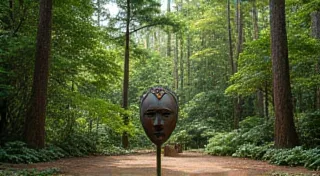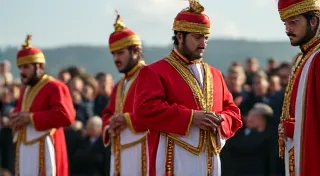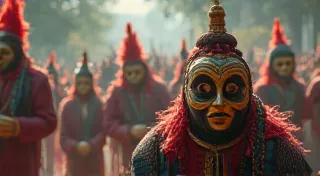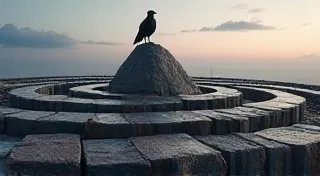The Masks of Kerala, India: Kathakali and Theyyam Traditions
Kerala, a vibrant state in southern India, boasts a rich tapestry of cultural traditions. Among these, the performance arts of Kathakali and Theyyam stand out, and integral to their visual impact are the exquisitely crafted masks. These masks are more than mere props; they are embodiments of characters, carriers of stories, and profound expressions of Kerala's cultural heritage. This article delves into the intricacies of these masks, exploring their creation, symbolism, and significance. The artistry involved in creating theatrical representations isn’t unique to Kerala; similar traditions utilizing masks can be found across the globe, from the stunning masks of the Tlingit people, rich with raven tales and spirit connections, to the intricately designed Noh masks of Japan.
Kathakali Masks: Heroes, Villains, and the Divine
Kathakali, a classical dance-drama form, is renowned for its elaborate costumes and dramatic makeup. The masks in Kathakali, though often referred to as “masks,” are actually highly stylized makeup renderings achieved through pigments applied to the actor’s face. The makeup techniques and colour palettes are meticulously defined, representing specific character types. Green signifies noble or divine characters, red indicates anger and negativity, yellow portrays a character of medium virtue, and black signifies evil or demonic figures.
The facial expressions are amplified by the makeup, allowing for a nuanced portrayal of emotions. The makeup is applied in layers, creating a three-dimensional effect that enhances the dancer’s movements. The application itself is a complex art form, requiring years of training. It's a demanding process that demands precision and deep understanding of the character being portrayed, mirroring the dedication found in other masking traditions worldwide.
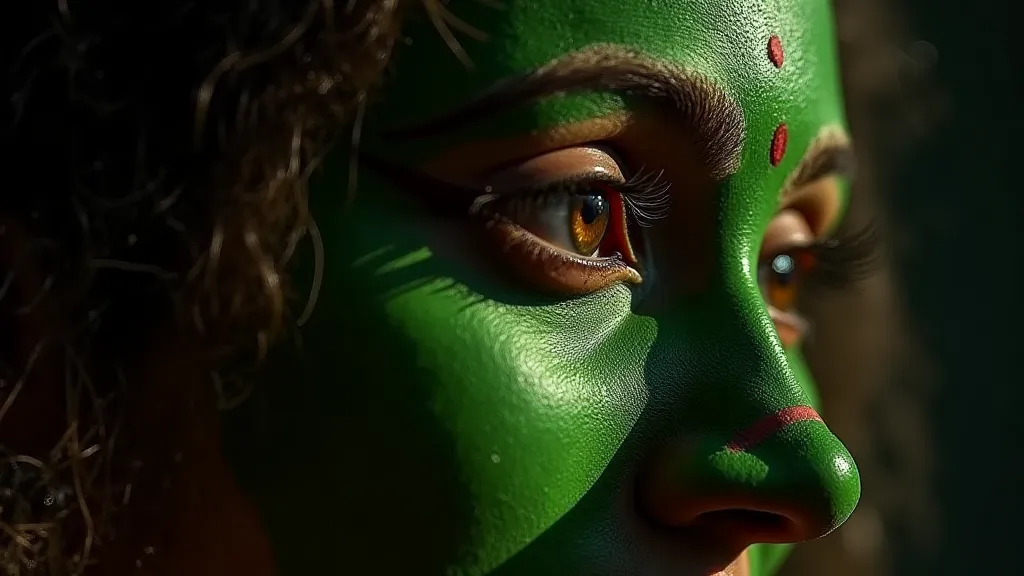
Different roles in Kathakali demand distinct makeup styles. Characters like Hanuman (the monkey god) and Arjuna (a warrior from the Mahabharata) have their unique makeup signatures, instantly recognizable by audiences. The skill of the makeup artist contributes significantly to the overall impact of the performance, enhancing the visual storytelling in a manner akin to the focused artistry of Japanese Noh masks, where even the subtlest changes in expression can dramatically alter the narrative.
Theyyam Masks: Ancestors and Deities Descending
Theyyam is a vibrant ritualistic performance art form predominantly found in North Kerala. Unlike Kathakali, Theyyam involves actual masks, sculpted and painted to represent deities, ancestral spirits, and mythical figures. These masks are crafted from wood, often jackfruit wood, and are meticulously carved and painted with vibrant colours. The act of crafting these masks isn’t merely a technical process; it’s a deeply spiritual undertaking, reflecting the profound connection between the artist and the deity being represented – a resonance echoed in many cultures, as seen in the practices surrounding the masks of West Africa, used in rituals and storytelling that honour ancestors.
The creation of a Theyyam mask is a sacred process. The craftsman, often a hereditary artisan, follows traditional designs and techniques passed down through generations. The masks are not merely representations; they are believed to be vessels for the deity or spirit being invoked during the performance. They're tangible embodiments of the divine, imbued with power and significance.
The colours used in Theyyam masks hold specific meanings. Red is often associated with power and vitality, black represents darkness and mystery, and yellow signifies auspiciousness and purity. Beyond the symbolic color choices, the physical creation of the masks – the carving, the shaping, and the painting – is a painstaking process that demonstrates the craftsman’s profound respect for the traditions and the deities they represent. It speaks to the enduring power of ancestral knowledge and the careful preservation of cultural heritage.
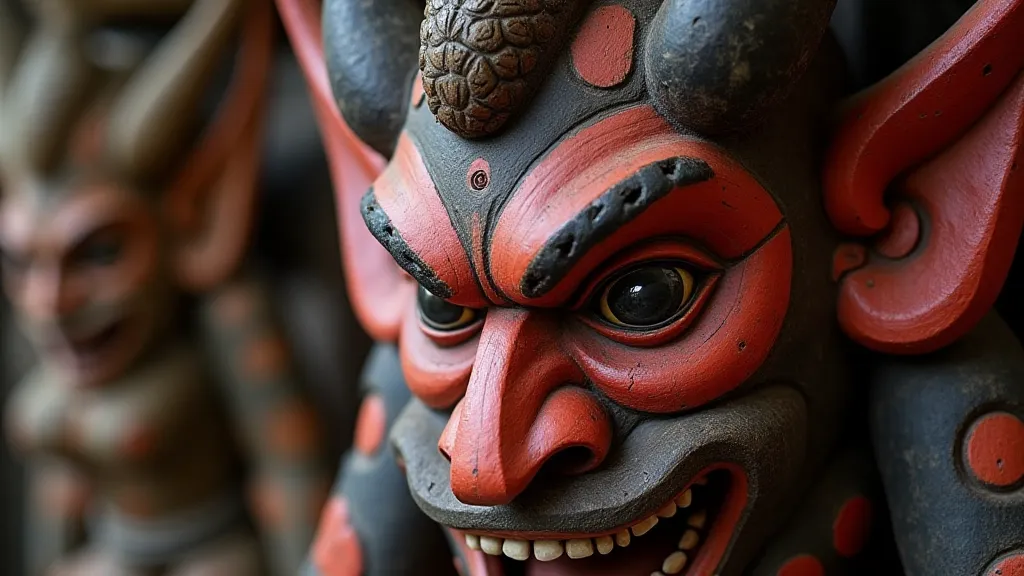
Craftsmanship and Cultural Significance
Regardless of whether they’re makeup renderings or physical masks, the art of creating these theatrical representations in Kerala is deeply intertwined with cultural heritage. Both Kathakali and Theyyam traditions rely heavily on the skills of generations of artisans. The process of mask creation involves intricate wood carving, colour mixing using natural pigments, and detailed painting techniques. The careful application of pigment and the precise carving of wood speak to a deep respect for tradition, similar to the dedication observed in modern mask-making practices, where artists seek to capture the spirit of the past – a phenomenon explored in detail in articles like "Fractured Reflections: The Modern Mask Maker and the Ghosts of Ancestors."
The tradition of mask-making also involves a crucial element of secrecy and transmission of knowledge. Many techniques are passed down through families or within specific communities, ensuring the continuity of artistic practices. The limited scope of sharing fosters an environment of profound understanding and artistic excellence. This aspect isn't unique to Kerala either. Across the world, these traditions are often carefully guarded, reflecting the value placed on preserving artistic heritage and the knowledge embedded within the masks themselves.
The use of natural pigments in mask creation is another defining characteristic of these traditions. Colors are often derived from plants, minerals, and other natural sources, resulting in a unique and earthy palette. This reliance on natural materials underscores the deep connection between the art form and the environment. It is a testament to the resourcefulness and ingenuity of the artisans, who have mastered the art of transforming natural elements into vibrant and meaningful works of art. The longevity of these practices is also noteworthy; many of the techniques and designs have been passed down through generations, reflecting a commitment to preserving cultural identity and artistic heritage.
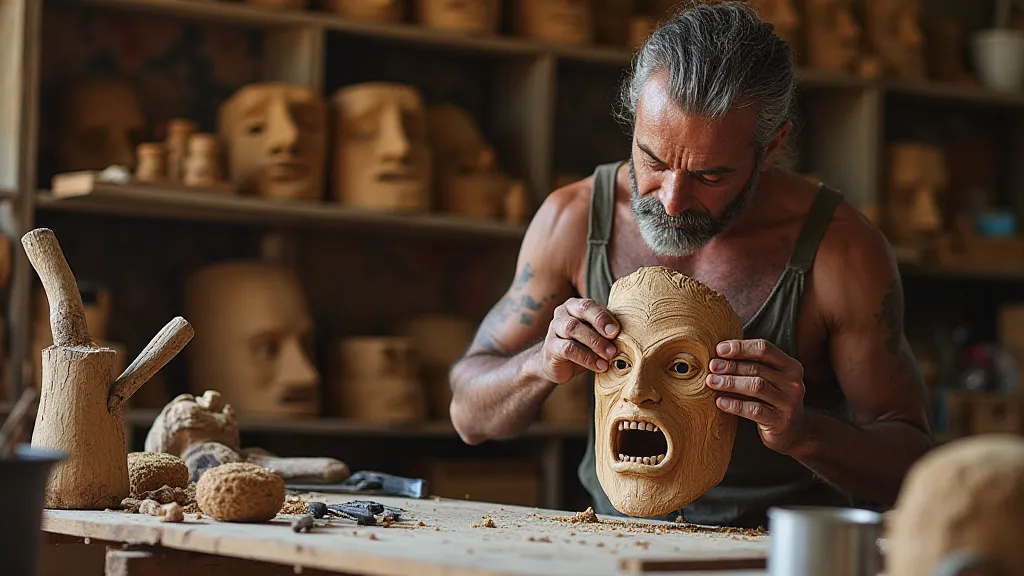
Beyond their aesthetic appeal, these masks serve as powerful reminders of Kerala's rich folklore, mythology, and religious beliefs. They are integral to the storytelling process, enabling performers to embody characters and connect with audiences on a profound level. The visual impact of the masks is not merely decorative; it is a vital component of the overall performance, serving to enhance the narrative and create a truly immersive experience. They are portals to other realms, bridging the gap between the earthly and the divine.
Preserving these traditions and supporting the artisans who maintain them is vital for safeguarding Kerala’s unique cultural identity. The future of these art forms depends on the continued dedication of the artisans and the ongoing support of the community. Raising awareness about the importance of these traditions and promoting sustainable practices is essential for ensuring their survival for generations to come. The legacy of Kerala's masking traditions is a treasure that deserves to be cherished and protected.
Further exploration of masking traditions around the globe reveals common threads of spirituality, storytelling, and artistic excellence. While each culture has its own unique styles and techniques, the underlying purpose remains the same: to connect with the divine, to honor ancestors, and to share stories that have been passed down through generations. The masks of Kerala, India, stand as a testament to this enduring human need to express ourselves through art and to celebrate the richness of our cultural heritage.
